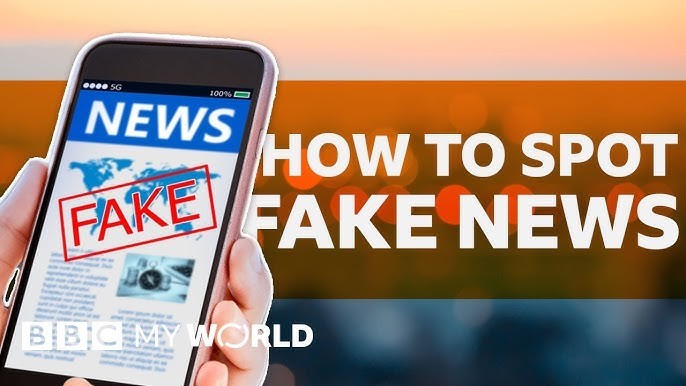The speed at which technology evolves makes it one of the most exciting yet confusing areas to follow. Every week seems to bring headlines about groundbreaking innovations, disruptive startups, or new gadgets that promise to change the way we live and work. But this constant flow of information also creates fertile ground for misinformation. Fake tech news spreads quickly because it plays on curiosity and excitement, often blurring the line between what is real and what is speculative. For professionals who rely on accurate insights to make decisions, learning how to spot fake tech news online is becoming just as important as understanding the technologies themselves.
One of the first indicators of fake tech news is sensationalism. Stories that claim a revolutionary breakthrough or world-changing invention without providing credible sources should immediately raise suspicion. For example, a headline declaring that a new smartphone battery will last a year on a single charge may generate clicks, but without verification from trusted outlets or peer-reviewed research, it is more hype than fact. The tech world is full of prototypes and early-stage experiments, many of which never make it to market. Recognizing the difference between promising research and commercially viable technology requires a healthy dose of skepticism and a willingness to dig deeper than the headline.
Credible sources are the backbone of legitimate reporting, and one way to evaluate a tech story is by asking who is behind it. Established publications with reputations to uphold are far less likely to risk their credibility on unverified claims. Fake tech news often circulates on obscure blogs, forums, or social media accounts that lack accountability. Checking whether the story has been reported by multiple respected outlets can serve as a simple yet effective filter. If only one questionable site is carrying the news, it is a sign that caution is warranted. For example, when major companies like Apple or Google release new products, the news is typically covered broadly across multiple platforms, each adding context and analysis. A groundbreaking claim that appears in isolation is rarely trustworthy.
The quality of evidence presented also provides clues. Legitimate tech reporting often includes references to expert opinions, detailed specifications, or verifiable demonstrations. Fake stories, by contrast, rely on vague descriptions, unnamed insiders, or unverifiable leaks. A report claiming that a startup has developed an artificial intelligence capable of human-level reasoning, for instance, should be accompanied by evidence such as research papers, technical explanations, or demonstrations at recognized conferences. Without these, it is likely more fiction than fact. Readers can protect themselves by asking whether the article provides enough detail to evaluate the claim, or if it relies on buzzwords designed to impress without informing.
The rise of social media has made fake tech news particularly difficult to control. Platforms thrive on engagement, which means eye-catching headlines and emotionally charged content spread faster than careful analysis. A misleading claim about a data breach or a security flaw, for example, can cause panic before experts have had the chance to investigate. This creates an environment where speed often outweighs accuracy. For businesses, acting on misinformation can have real consequences, from unnecessary security expenses to misguided investments. Taking a moment to verify information before sharing or acting on it can prevent the amplification of rumors and ensure that decisions are based on fact rather than speculation.
Another tactic for spotting fake news is to consider the motivations behind the story. In the tech industry, misinformation is often used to manipulate markets, build hype for products, or discredit competitors. A company seeking investment might exaggerate its capabilities to attract attention, or a competitor might spread negative rumors to undermine confidence in a rival’s launch. Understanding these motivations helps explain why certain stories gain traction despite lacking credibility. For example, announcements about breakthrough medical devices often surface before clinical trials are complete, generating excitement and funding but ultimately failing to deliver. Readers who recognize the incentives at play are better positioned to separate genuine progress from strategic exaggeration.
Critical thinking plays a central role in evaluating tech news. Asking practical questions such as whether a claim makes sense in light of current knowledge can quickly expose flaws. If a story suggests that a new laptop costs half as much as competitors while offering double the performance, it is worth questioning how such an advancement was achieved and why established players have not reached the same milestone. Often, fake news crumbles under scrutiny because it relies on assumptions that contradict established facts. Developing the habit of questioning rather than accepting information at face value is one of the most effective defenses against misinformation.
Technology itself can also be a tool for fighting fake tech news. Search engines make it easy to cross-check claims, while fact-checking organizations regularly analyze viral stories to separate truth from fiction. Reverse image searches can reveal whether photos used to illustrate a story are authentic or repurposed from unrelated events. For instance, a viral post showing a supposed prototype of a futuristic smartphone might turn out to be a manipulated image from a concept artist’s portfolio. Leveraging these tools allows readers to verify information independently rather than relying solely on the credibility of the original source.
Ultimately, spotting fake tech news online is less about mastering technical knowledge and more about cultivating habits of skepticism, verification, and reflection. The same principles that guide sound business decisions—due diligence, attention to detail, and reliance on credible evidence—apply equally well to evaluating information. In a digital environment where misinformation can spread as quickly as innovation, professionals who practice these habits are better equipped to make informed choices and protect their organizations from unnecessary risks.
The promise of technology is real, but so are the distortions that surround it. By approaching tech news with curiosity balanced by critical thinking, readers can enjoy the excitement of discovery without falling prey to falsehoods. In doing so, they not only safeguard themselves from misinformation but also contribute to a culture where accuracy and credibility matter. The ability to discern truth from hype has become an essential skill in the digital age, one that empowers individuals and organizations to navigate the fast-moving world of technology with confidence.





